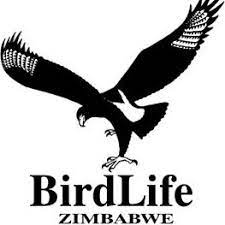IMPORTANT BIRD AREAS
IBA: Z012 Banti Forest Reserve
FULLY PROTECTED
GLOBAL IBA (A2, A3)
19°20’S; 32°48’E
c. 2 220 ha
SITE DESCRIPTION
Banti Forest Reserve (22.2 km2) lies south of the Bvumba Highlands (IBA Z011), across the Burma Valley. It forms part of the international border with Mozambique and is bounded by commercial and resettlement farms. It is not easily accessible, but can be reached via dirt roads from Himalaya Police Station, about 30 km east of the Mutare-Chimanimani road. The Forestry Commission administers Banti Forest. There is no infrastructure, and the area is used only for cattle grazing by nearby farmers.
The mountains of Banti (1 984 m a.s.l.) and the Himalayas (2 211 m a.s.l.) rise steeply from the Burma Valley, and give rise to rivers draining eastwards into Mozambique. There are several cliff faces and an escarpment that runs into Mozambique. The eastern slopes and highest-altitude areas receive orographic rainfall, presumably similar to that of the Bvumba. The vegetation consists of short montane grassland with patches of montane forest on scree slopes and in deep valleys. There are a few small patches of wetter forest where Afrocrania volkensii is co-dominant with Ilex mitis and Olea hochstetteri. The drier forest holds Podocarpus latifolius, Schefflera umbellifera and Maesa lanceolata. Banti was originally designated as Forest Land because it has the largest population of P. latifolius in Zimbabwe. Towards the west, the grassland gives way to well-developed Brachystegia woodland.
BIRDS
P.A. Clancey collected a total of 51 species in 1962 and 1973. M.P.S. Irwin also visited the area in the 1970s. Since then, there have been no extensive surveys as the area was inhospitable during Zimbabwe’s Independence War, and (until the recent peace accord) the war in Mozambique. A brief field trip (2 days) in March 1997 listed 48 species but did not record Blue Swallow Hirundo atrocaerulea, although the habitat appears suitable and the species is suspected to occur here.
OTHER THREATENED/ENDEMIC WILDLIFE
There is little information on other important montane species. The 1997 field trip identified 27 species of terrestrial and epiphytic orchids. Banti is known for an endemic butterfly: Mylothris carcassoni.
CONSERVATION ISSUES
The area is not immediately threatened by logging or agriculture. The grasslands are used for cattle grazing. There are 5-6 rural families residing on the Forest Land and using forest products, presumably illegally. If their numbers increase, the area will be affected through clearing of lands for cultivation, cutting of trees, soil erosion along cattle paths and potential unsustainable utilisation of resources. A scheme to incorporate the need for forest products by the local residents while maintaining the forest’s ecological integrity should be investigated. The presence of landmines along the border with Mozambique undoubtedly acts as a deterrent to development. The Mozambican forests are more extensive and clearly any conservation programme should be international.
RR & BRA | STATUS
Whyte’s Barbet | Uncommon
Stripe-cheeked Greenbul | Common
Miombo Tit | Uncommon
Cinnamon-breasted Tit | Rare
Kurrichane Thrush | Common
White-starred Robin | Common
Yellow-throated Woodland-warbler | Common
Roberts’s Warbler | Common
White-tailed Crested Flycatcher | Common
Olive Bush-shrike | Fairly Common
Bronzy Sunbird | Common
RR & BRA – Restricted-range and Biome-restricted Assemblage
